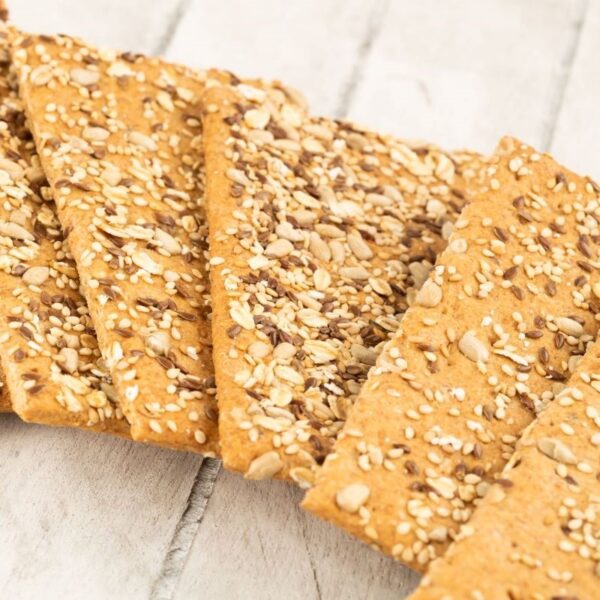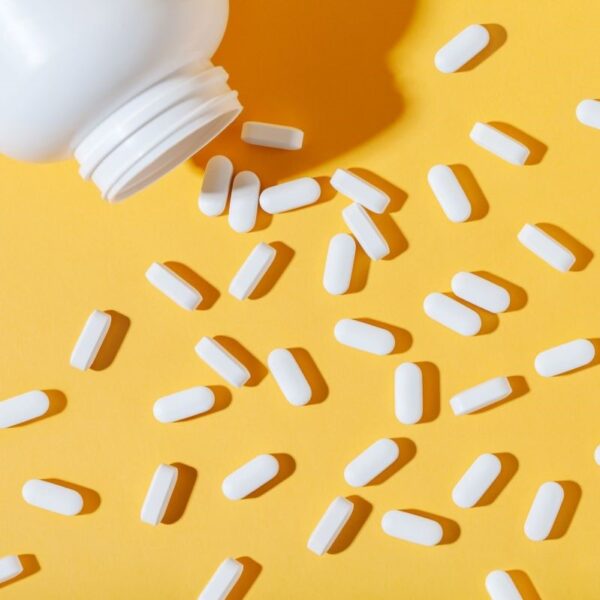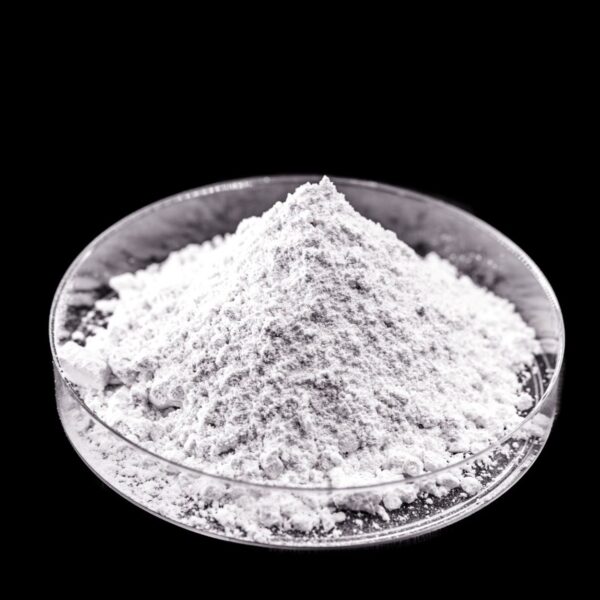Texturized soy protein (TSP), a type of texturized vegetable protein, is a concentrated source of protein derived from soybeans. It’s commonly used in the food industry, especially in plant-based meat products, to impart particular textures to foods.
What is Texturized Soy Protein?
Texturized soy protein is a generic term for soy-based processed protein formed into structures that simulate lean meat when rehydrated and cooked. Textured soy protein stands out among plant-based proteins since it is a complete protein containing all nine essential amino acids. It is an excellent alternative to animal-based meats.
How is Texturized Soy Protein Produced?
Textured soy protein is produced by separating soy protein from the other components of soybeans, leaving a paste. The paste is subjected to heat treatment and then extruded or kneaded into various forms and textures. The resulting textured soy protein may be dried for later rehydration. Depending on the process used, the product may have a variety of textures, such as a jerky-like consistency or a ground beef-like appearance.
Use of Texturized Soy Protein in Food Products
Soy protein has many desirable functional properties, including water binding, swelling, gelling, and fat emulsification. Additionally, it has a high protein content, with its amino acid composition very similar to meat proteins, and it has a low cholesterol content and contains several vitamins and minerals such as magnesium.
Textured soy protein carries the functional and nutritional properties of soy protein with the additional capability of providing texture. It’s commonly used as a meat substitute and a nutritional filler, extender, and texturizing agent to improve the sensory experience of meat products like tacos and meatballs.
Applications in the Food Industry
| Function | Applications |
| Filler | Burger Patties, Emulsified Meats, Sausages, Meat Analogs |
| Extender | Burger Patties, Ground Meat, Emulsified Meats, Sausages, Meat Analogs |
| Texturizing Agent | Health Bars, Salads, Cereals, Pasta, Noodles |
| Protein Supplement | Health Bars, Salads, Cereals, Pasta, Noodles, Burger Patties, Emulsified Meats, Sausages, Meat Analogs |
Properties of Texturized Soy Protein
| Physical Form | Solid Chunks, Shreds, or Meal |
| Color | Light Caramel to Brown |
| Odor | Odorless |
Typical Formulations
Soy Protein Bar
Here is an example of a soy protein bar formulation table with textured soy protein:
| Ingredients | Composition |
| Soy Crisps | 24 |
| Soy Protein Isolate | 6.3 |
| Soy Toast Without Salt | 13 |
| Textured Soy Protein | 8 |
| Dried Banana | 10 |
| Glucose Syrup | 27.5 |
| Raw Sugar | 2.2 |
| Maltodextrin | 1.8 |
| Water | 4.3 |
| Palm Oil | 1.5 |
| Lecithin | 0.5 |
| Coloring | 0.7 |
| Glycerine | 0.3 |
Source: ResearchGate
Breaded Meat
Here is an example of a chicken patty formulation table with textured soy protein concentrate along with the % weight of ingredients:
| Ingredients | Composition |
| Chicken breast (boneless) | 58.5 |
| Water | 17.5 |
| Soy protein isolate | 1 |
| Salt | 0.8 |
| Phosphate | 0.2 |
| Skin | 10 |
| Water | 8 |
| Soy protein | 2 |
| Textured soy protein concentrate | 2 |
Source: CABI
Hotdog
Here is an example of a hotdog formulation table with textured soy flour concentrate along with the % weight of ingredients:
| Ingredients | Composition |
| Beef | 20 |
| Beef fat | 9 |
| Pork trimmings | 18 |
| Water/ice | 38 |
| Salt | 1.5 |
| Curing salt (6.25% NaN02) | 0.15 |
| Sodium ascorbate | 0.05 |
| Phosphate | 0.3 |
| Non-fat dry milk | 1 |
| Soy protein concentrate | 3 |
| Carrageenan | 0.5 |
| Textured soy flour | 2 |
| Wheat flour | 4.5 |
| Seasoning | 2 |
Source: CABI
Formulation Considerations
| Type | Preparation | Uses | Properties |
| Textured Soy Flour | Thermoplastic extrusion or steam texturization | Thermoplastic extrusion or steamtexturization | – Composition is similar to the corresponding source material – Basic form contains ~ 52% protein, fibers & carbohydrates – Brings typical soy flavor to the final product – Has a softening effect on the finished product – Typical water absorption 2-3 times w/w |
| Structured Soy Protein Concentrate | Thermoplastic extrusion or extrusion of the isolate solution into an acid-salt bath that coagulates the protein into fibers, which are then combined with binders to form fiber bundles | Poultry, Meat, Seafood, and Analogs | – Basic form contains ~ 65% protein – Improves taste profile due to reduction in carbs – Reduces non-digestible natural sugars – Typical water absorption 2.5-3.5 times (w/w) |
| Structured Soy Protein Isolate | Thermoplasticextrusion or extrusion of the isolate solution into an acid-salt bath that coagulates the protein into fibers, which are then combined with binders to form fiber bundles | Poultry, Meat, Seafood, and Analogs | Fibrous Foods, Round Meat Products, Poultry, and Seafood |
Texturization Process & Parameters
Texturization techniques can be classified into five groups: single screw extrusion (SSE), twin screw extrusion (TSE), shear/couette cell (SC), spinning (S), and mixing/other methods (M/O).
Process parameters, including screw configuration, temperature set-up, screw speed, solid and liquid dosing, and moisture content, can result in dramatically different product structures and textures.
Various characteristics of the raw materials (including pretreatment, composition, and nutritional properties) and the extrusion process will affect the properties of the final product. For most plant proteins, a pre-treatment (acid or alkaline) is typically required during extraction to achieve a higher yield and more desirable extrusion outcomes.
Process Additives & Effect on Properties
Several additives are commonly used to enhance the textural integrity of extruded proteins and stabilize vegetable protein processing. These additives have a variety of effects on the resulting product.
| Additive | Role |
| Emulsifiers (Ex. Lecithin) | Emulsifiers provide a smooth laminar flow in the extruder, increasing the density of products. A higher degree of cross-linking occurs during the extrusion. |
| Salt | Salt is mainly used to enhance flavor and augment the function of phosphates. |
| Calcium chloride | Calcium chloride increases textural integrity and smoothes product surfaces. |
| Sodium alginate | Sodium alginate helps to increase the chewiness, water-holding capacity, and density of extruded protein products. |
| Sulfur | Sulfur aids in the cleavage of disulfide bonding and the unraveling of long twisted protein molecules. This reaction with the proteinmolecules causes increased expansion, smoothing the product surface and adding stability to the extrusion process. |
| Color Enhancers | Color enhancers are used to bleach or lighten the meat extender/analog color. |
Variants of Texturized Soy Protein
Textured soy protein is available in different formats: textured soy flour, structured soy protein concentrate, and structured soy protein isolate. Defatted soy flour contains 50-60% protein, while soy protein concentrate contains 65% protein. Soy protein isolate contains a minimum of 90% protein. Each can be textured to create various shapes, including chunks, nuggets, strips, grains, flakes, and crumbles. In terms of relative hardness, soy flakes are the softest, followed by crumbles. Extruded soy granules are chewier comparatively. Textured soy protein isolate typically forms fibrous structures which can be modified to be used as meat analogs.
| Meat Extenders | TSP is prepared to be remarkably similar to meat in appearance, texture, and mouthfeel when properly cooked. Structured meat analog has a striated, layered structure similar to muscle meat. |
| Structured Meat Analogues | TSP is mixed with meat for further processing, changing the properties of the meat. Size ranges from 2±30 mm, depending upon the application. |
| Fibrous Soy Protein | This is a layered and fibrous structured meat analog similar to real meat in composition and appearance. It typically contains at least 60±70% moisture, 2±5% oil, and 10±15% protein. |
| High Moisture Meat Analogues (HMMA) | When properly cooked, TSP is prepared to be remarkably similar to meat in appearance, texture, and mouthfeel. Structured meat analog has a striated, layered structure similar to muscle meat. |
Factors Affecting Choice of Textured Soy Protein Variants
When formulating food products, the choice of variant depends on various factors.
- Color plays a significant role in extender applications. The color profile can be light caramel, dark caramel, or red/brown. Uncolored (tan) variants can be prepared by bleaching or tanning.
- Particle size can range from 1 to 25 mm or larger. The size has to be greater than the desired final size if preparation involves one more grinding step. The size has a significant impact on the sensory properties of the TSP.
- The hydration capacity is another vital consideration. The water ratio in extruded protein for TSF, TSPC & TSPI is approx. 2:1, 3:1 & 4:1 respectively. For some applications, such as meat patties, it is recommended to purposely under-hydrate the TSP as the protein can absorb the fat and moisture released during the patty’s contact frying.
- Texture is the most critical parameter in selecting the TSP variant.
- Textured soy protein may carry undesirable flavors if prepared using soy flour and soy protein concentrate. Soy protein isolate does not have any taste.
Safety & Regulatory Considerations
| FDA Information | According to the FDA, textured vegetable protein may be used by itself or in combination with other binders and water as a fat replacer in substitute standardized meat food products. |
| FAO Information | FAO dictates that vegetable protein products be at least 40% (d.w.b.) in composition. If subjected to a texturization process, the product’s name may include an appropriate qualifying term such as “textured” or “structured.” |
Maximum Recommended Amounts
The recommended amount of texturized soy protein differs according to the variant used and the application. 10-20% is generally recommended if used as a filler or extended. Up to 50-60% is acceptable in meat analog (post-hydration). However, TSP made with soy flour must be limited to 10-15% as it carries a potentially undesirable flavor.
Additional Resources
- IOPscience – Enhancing Texturized Vegetable Protein Films with Natural Cross-Linkers
- NDpublisher – Improvement of Textural Properties of Texturized Vegetable Protein
- Patent-Art – Improving the Texture of Plant-Based Meat
- Anderson International – Maximizing Soybean Processing with Texturized Soy Protein
- Sun Nutra Foods – Texturized Vegetable Proteins
- NCBI – Advances in the Application of Textured Vegetable Protein
- NCBI – Effect of Texturized Vegetable Protein on Human Satiety
- Trace: Tennessee Research and Creative Exchange – Production of Textured Vegetable Protein
- Google Patents – Method for Preparing Textured Vegetable Protein







